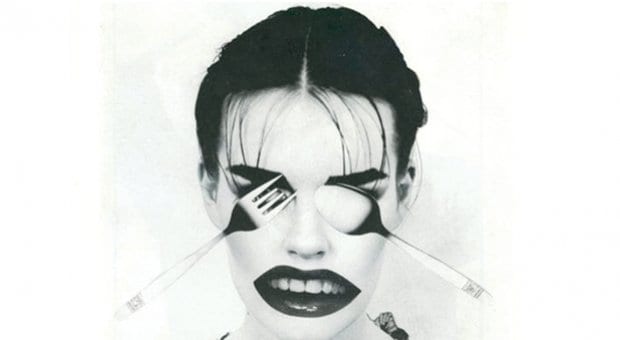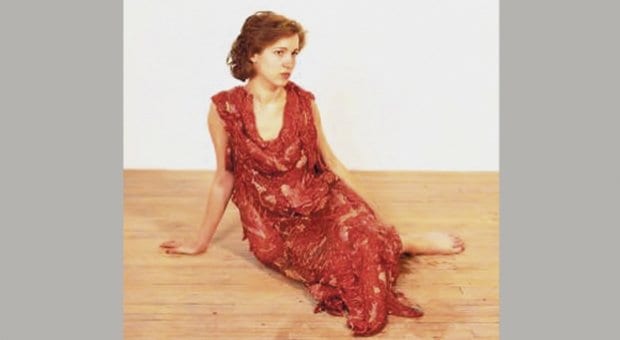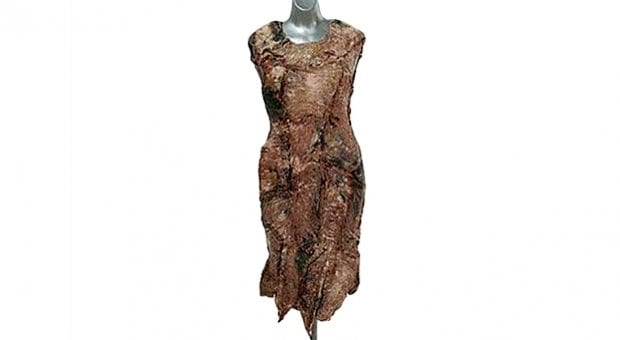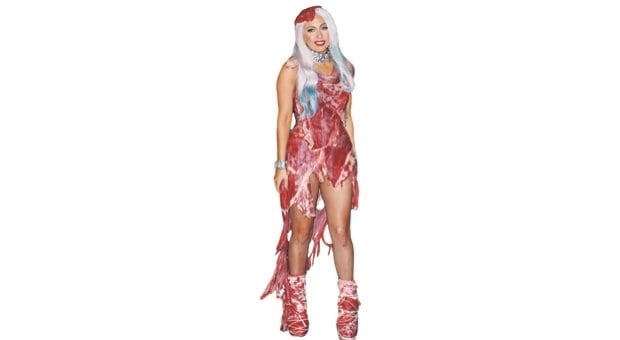
New Wave punker Linder Sterling wore a meat dress onstage in 1982. Credit: ????

Jana Sterbak's “flesh dress” comprises 50 pounds of raw steak. Credit: ????

Jana Sterbak's “flesh dress” comprises 50 pounds of raw steak. Credit: ????
Those hoping that Lady Gaga’s infamously decaying meat dress had gobbled up its full 15 minutes in the spotlight by now should probably find another pop culture phenom to harp on, as the fleshy, subversive slab of fashion — voted by Time magazine as the top fashion statement of 2010 — isn’t going anywhere soon. Gaga herself spoofed the dangly bits of raw flank steak, first donned to much public condemnation at the 2010 MTV Video Music Awards, in a Saturday Night Live promo late last year. Dissertations expounding on said flesh dress’s feminist, anti-fashion or anti-factory-farming readings have been emerging from university and college campuses across America ever since.
Designed by Franc Fernandez and styled by Nicola Formichetti, the bacon, steak and pork chop–assembled dress has amassed its fair share of devout fans and detractors: the Rock and Roll Hall of Fame went out of its way to dry, paint and preserve the dress, touring it as part of a national exhibit about pioneering women in rock and roll.
Gaga, responding to widespread public indignation from animal rights groups such as PETA — which argued the performer had callously paraded around wearing “the decomposing flesh of a tormented animal who didn’t want to die” — told Ellen DeGeneres back in 2010 that her aim was to make a statement about equality and condemn the US government’s much-maligned, now-repealed Don’t Ask, Don’t Tell policy. “If we don’t stand up for what we believe in and don’t fight for our rights,” she warned viewers, “we’re going to have as much rights as the meat on our bones. And I am not a piece of meat.”
What’s interesting is that Gaga and her Haus of Gaga style team’s stab at raw-meat couture (complete with meat purse and shoes) is only the latest in a long line of transgressive females stitching together meat, gender and fashion in the name of attention-grabbing art and incisive social commentary.
British New Wave punkster (and good friend of Morrissey) Linder Sterling, frontwoman of the experimental band Ludus, famously performed outfitted in a meat dress — with a massive black dildo to boot — to a crowd of Manchester patrons in 1982 to rail against men who liken the female body to meat cuts.
The most high-profile incarnation of the “flesh dress” leading up to Gaga’s appropriation is attributed to Montreal-based conceptual artist Jana Sterbak, whose Vanitas: Flesh Dress for an Albino Anorectic sculpture (1987) comprised 50 pounds and $260 worth of raw steak, stitched together and pre-salted to prevent rotting during its six weeks of gallery life. A framed photograph of a model wearing the dress was mounted on the nearest wall. Sterbak’s meditation on vanity, aging and human decay ignited quite the uproar in 1991 when it was included as part of an exhibition at Ottawa’s National Gallery, with some 200 people mailing in food scraps in protest and MPs campaigning to donate the meat … to nearby food banks.
“The protest was about government spending on the arts, closely following the purchase of Barnett Newman’s Voice of Fire by the National Gallery for over a million dollars,” Sterbak told Xtra in an email exchange. “The media got hold of it as a result of an intern working for the Ottawa paper, who called a shelter for homeless men to ask if they could make better use of the material … During the relative news silence due to Easter, other media took up the subject.”
More than 25 years after Sterbak laid bare the novel, not-quite-edible garment, this now-iconic piece has been reproduced and reimagined countless times, consistently igniting the ire of the same targets (animal rights organizations, rightwing anti-art curmudgeons and certain anti-poverty activists), serving to remind us that those issues remain just as relevant today. One can only imagine that the innumerable possibilities of lean red meat will strike a chord with the next generation of subversive artists with a bone to pick.
Head over to our Life section to check out more stories about meat!

 Why you can trust Xtra
Why you can trust Xtra


